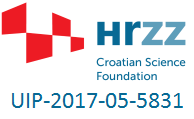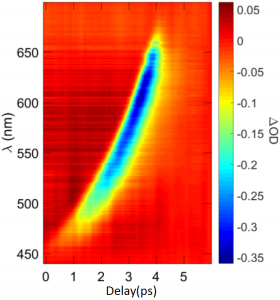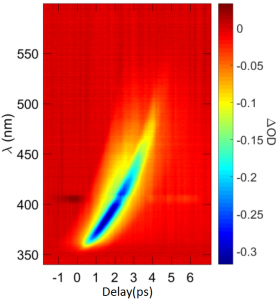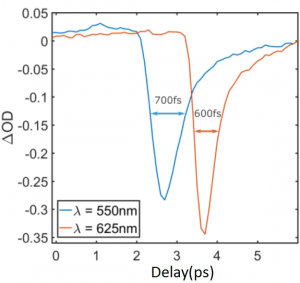Optical Kerr effect in benzene/acetonitrile
19/08/2018Optical kerr effect (kerr gating) was studied in benzene and a 50:50 mixture of water and acetonitrile. With the analysis of data, time resolution of the experiment is defined and reorientational times of the mentioned molecules are qualitatively compared. Wavelength of the pump pulse (gate puls) was 267nm and the spectrally broadened probe pulse was generated by focusing a fundamental laser beam of 800nm in a thin sapphire plate (in the case of benzene) and in a thin calcium-fluoride plate (in the case of water-acetonitrile mixture) where supercontinuum extends more to UV wavelengths than in the case of a sapphire plate. Besides 2D plots, wavelength cuts (signals at specific wavelengths vs delay) are given.
FWHM of wavelength cuts defines time resolution of the experiment, also, the time required for signal to return back to its initial value after its minimum is connected to reorientational time of the molecules of the solvent. Time resolution was roughly ~600-700fs during the measurement, and qualitative comparison of the reorientational time has shown that benzene molecules have slower reorientational time than those of acetonitrile/water which is in agreement with previous measurements of many other authors.
- Benzene
- Acetonitrile-water
- Benzene wavelength cut
- Acetonitrile-water wavelength cut
 Group for Applied Ultrafast Spectroscopy
Group for Applied Ultrafast Spectroscopy 


